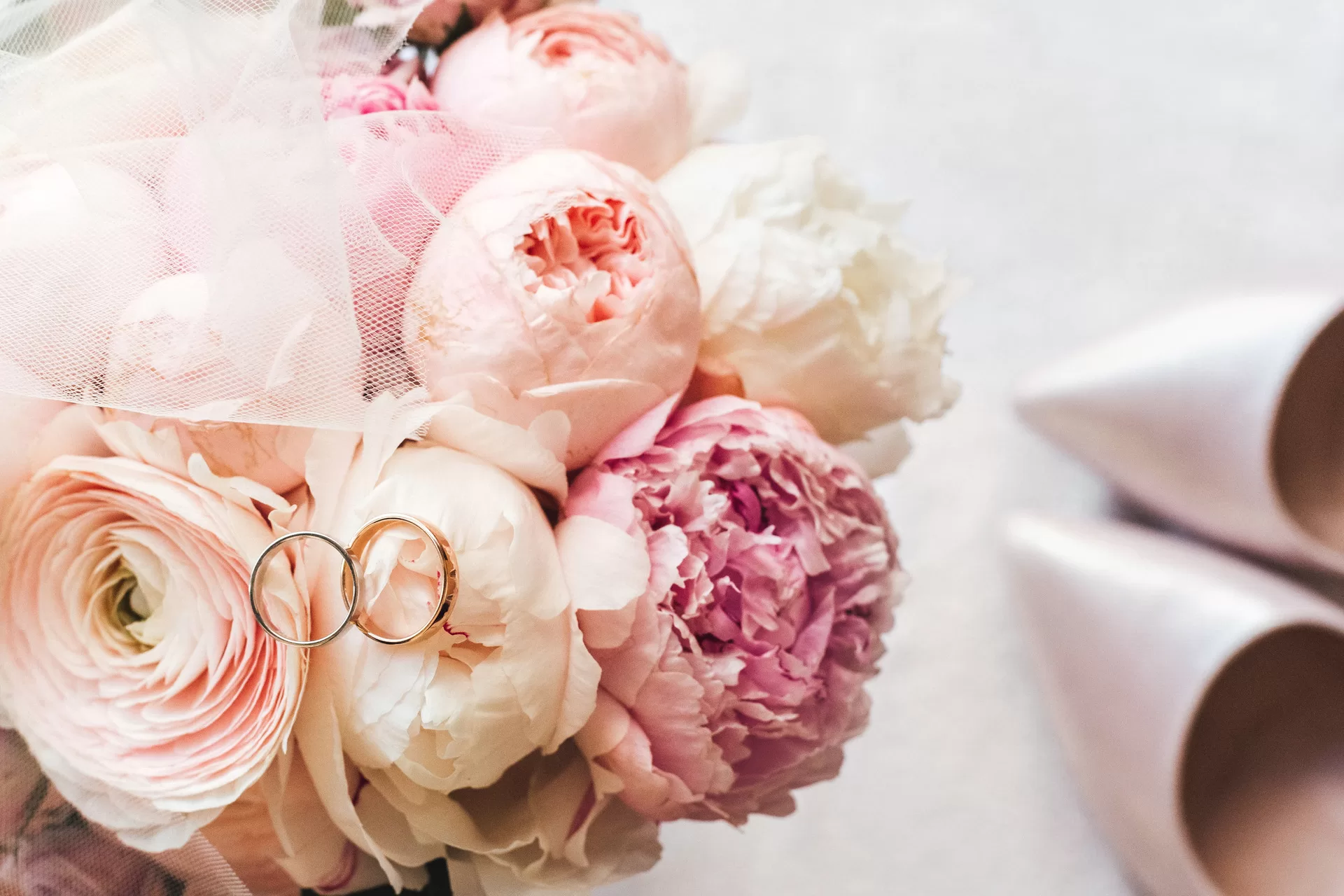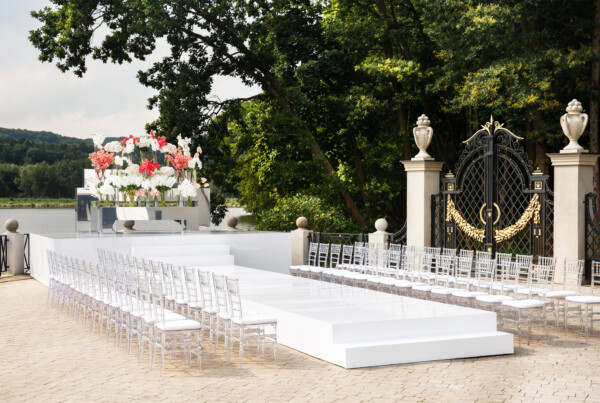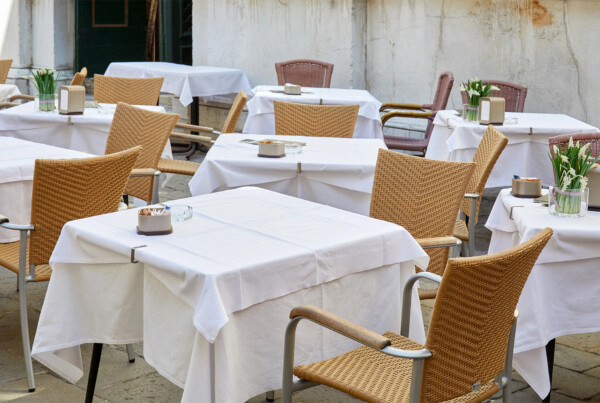The choice of wedding colors sets the tone for your special day, influencing everything from invitations and decorations to bridesmaid dresses and floral arrangements. Selecting the perfect color palette requires careful consideration to ensure a cohesive and visually appealing ambiance. This article explores various factors to consider when choosing your wedding colors, from personal preferences and venue settings to seasonality and cultural symbolism. By keeping these essential elements in mind, you can create a memorable and harmonious color scheme that reflects your unique style and enhances the overall wedding experience.
Personal Style and Preferences
The first consideration when selecting wedding colors is your personal style as a couple. Your wedding should be a reflection of your taste, personality, and shared interests. Take some time to explore your individual preferences and discuss them with your partner. Consider colors that resonate with both of you, whether they are vibrant and bold or soft and romantic.
You may find inspiration in various aspects of your lives. For instance, if you both love the beach, consider incorporating ocean-inspired colors like aqua and sand. If you enjoy art, draw inspiration from your favorite paintings or artists. By infusing your personal style into the color palette, you’ll create a wedding that feels authentic and represents who you are as a couple.
Venue and Season
The venue and season of your wedding play a significant role in determining the most appropriate color palette. The venue’s ambiance and existing décor should complement your chosen colors. Consider the architectural elements, such as the walls, flooring, and furnishings, as they can influence how colors are perceived in the space.
A rustic barn or garden venue may lend itself well to earthy tones and soft pastels, creating a romantic and natural atmosphere. An elegant ballroom, on the other hand, may call for rich jewel tones or classic neutrals to enhance its sophistication. Consider how the colors will interact with the venue’s lighting and surroundings to ensure a cohesive and visually pleasing result.
Seasonality is another crucial factor to consider. Each season offers unique color palettes that align with its characteristics. Spring weddings often feature soft pastels and blooming floral shades, evoking a sense of freshness and new beginnings. Summer weddings embrace vibrant and tropical hues, creating a lively and energetic ambiance. Autumn weddings often showcase warm, earthy tones, reflecting the changing foliage and cozy atmosphere. Winter weddings can incorporate icy blues, deep burgundies, or silver and gold accents, capturing the magic and elegance of the season.
Cultural Significance
If you have cultural or ethnic traditions you wish to honor, incorporating colors with symbolic significance can be a beautiful way to pay homage to your heritage. Different cultures associate colors with various meanings and traditions. For example, red symbolizes luck and prosperity in Chinese culture, while white is traditionally associated with purity and innocence in Western weddings.
Research the cultural significance of colors that resonate with your background and consider integrating them into your wedding palette. This not only adds depth and meaning to your celebration but also connects you and your guests to your heritage. You can incorporate these colors in subtle ways, such as in the floral arrangements, linens, or accessories.
It’s important to be mindful of cultural appropriation and to approach the incorporation of cultural elements with respect and understanding. If you are uncertain about the cultural significance of certain colors, consult with someone knowledgeable about the traditions to ensure you honor them appropriately.
Color Psychology and Mood
Colors have a profound impact on emotions and can set the mood for your wedding. Understanding color psychology can help you select hues that evoke the desired atmosphere. For instance, soft blues and greens are calming and tranquil, creating a serene and peaceful ambiance. Bold reds and oranges exude energy and passion, infusing your wedding with vibrancy and excitement. Neutrals such as beige and ivory create an elegant and timeless backdrop, allowing other elements to stand out.
Consider the emotions you want to evoke on your wedding day and choose colors accordingly. If you envision a joyful and lively celebration, consider using cheerful yellows or vibrant pinks. If you desire a sophisticated and romantic atmosphere, opt for soft lavender or muted shades of gray. The chosen colors will not only set the mood for you and your partner but also influence the emotions and experiences of your guests.
When selecting your color palette, keep in mind the significance of the main wedding events. For instance, if you have an outdoor ceremony during sunset, warm and golden tones can enhance the romantic ambiance. If you’re planning a lively dance party, vibrant and energetic colors can create an atmosphere of celebration and fun.
Complementary and Contrasting Colors
When selecting your wedding colors, think about how they will interact with one another. Complementary colors, which sit opposite each other on the color wheel (e.g., blue and orange or purple and yellow), create a vibrant and visually striking combination. Contrasting colors, on the other hand, are those that are far apart on the color wheel (e.g., blue and red or green and orange) and can also produce a captivating effect.
Experiment with different color combinations to find the ones that resonate with your vision and bring out the best in each other. Consider using a dominant color and pairing it with one or two complementary or contrasting colors as accents. This approach can create a dynamic and visually appealing palette.
However, be mindful of the overall balance and harmony of the color scheme. Some colors may clash or overwhelm the overall aesthetic if used in excess. To create a cohesive look, consider incorporating neutrals or softer shades to balance the palette. Neutrals such as ivory, beige, or gray can provide a timeless and elegant foundation for bolder accent colors.
Practical Considerations
While aesthetics are crucial, it is essential to consider the practical aspects when choosing your wedding colors. Think about how your colors will translate across various elements of your wedding, including invitations, attire, floral arrangements, table linens, and décor. Ensure that your chosen colors can be easily coordinated and sourced.
Consider the availability of flowers in your chosen colors during your wedding season. Certain blooms may be more difficult to find or costly if they are out of season. Research and consult with florists to determine the best floral options within your color palette.
Additionally, consider how your color palette will look in photographs. Bright, bold colors can create stunning visual impact, but they may also dominate the images. Soft, muted tones tend to be more timeless and can create a harmonious balance in your wedding album. Discuss with your photographer how the colors will translate in different lighting conditions to ensure your wedding photos reflect the desired aesthetic.
Choosing your wedding colors is an exciting and creative process. By considering personal style, venue, seasonality, cultural significance, color psychology, practical aspects, and color combinations, you can select a color palette that reflects your unique love story and creates a memorable ambiance for your special day. Remember to trust your instincts, seek inspiration from various sources, and consult with your partner and wedding planner to ensure a harmonious and visually stunning celebration that will be cherished for years to come.





